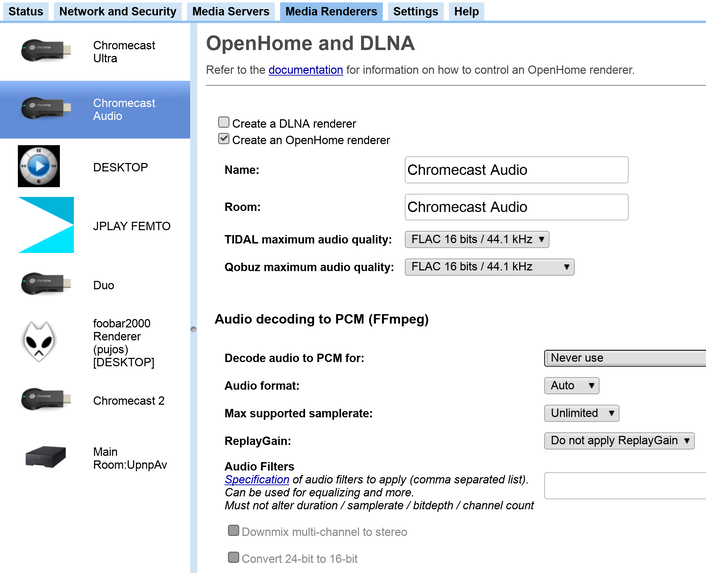fpitas
Master Contributor
I'm not even sure I understand the point being made.An argument from incredulity isn’t a very good argument..
I'm not even sure I understand the point being made.An argument from incredulity isn’t a very good argument..
Psychoacoustics is shared. So it can be examined. This includes "preference", which is only individual at the edges, the more you look into it.Regardless of what constitutes maximum fidelity to the source, I would never tell anyone to listen to anything other than what they prefer. Regardless of the basis for that preference, real or imagined. Life is too short to get disquieted by someone else's psychoacoustics.
You have to make sure the output is level matched otherwise no fair comparison can be made.At the moment I use two DACs, one is the Chromecast Audio Analog Output (3.5mm) and the other is the Topping E30. Okay, so far so good. I balanced both with the multimeter and listened blindly against each other. Ok, there were differences, but I didn't do the test to hear the differences, I did it to find out which one I preferred. And every time, I preferred the Chromecast Audio. It's not that I don't know that the CCA has worse measurements, but I find that the sound is much nicer than the E30, even though I know that the E30 has better measurements. Am I deaf or do I just have different preferences? But let's consider that as a fact, what does that mean in terms of improvement? What would be a DAC I could try if I wanted to improve?
To be fair, that is one important thing that the OP did do.You have to make sure the output is level matched otherwise no fair comparison can be made.
OK, I think I've got it. I'm not getting anywhere here. No numbers, no protocols, no evidence, so, nothing. I also think the test, for whatever reason, was incorrect. Not helpful but eventually I'll look again for the error or just stick with the CCA. Anyway, thanks for your time and sorry for the wasted bytes.
I really wonder how many of you own DACs that are more expensive than a couple of bucks when there is no audible difference anyway (other than features and connections)!? It really seems that almost nothing of what is measured here has any effect on the audible result!
It's barely possible. -90dB distortion is extremely hard to hear, if it's possible at all. -110dB distortion is basically impossible to hear. If you're really hearing something that noticeably and strongly affects your listening preference, it's more likely something nonlinear that's affecting the frequency response somehow.What stands out to me is the second harmonic (2k).
Is it possible that I like this better?
This seems like a good thing to check here!So I'm curious. The Chromecast Audio Google Home app has a setting, Full Dynamic Range, which is off by default to not overwhelm less than full range speakers. You have to switch it on manually.
Have you changed the setting to FDR, or is it still default?
+1Well it's called Audio Science Review so I think you're incorrect there. What people here want is proof. I do want to hear what these properties are though.
Don't get hung up on the far left "measurements are everything" mantra- what feels good to you is what matters.

Uh huh. We're such a bunch of radicals here.Don't get hung up on the far left "measurements are everything" mantra- what feels good to you is what matters.
Thanks for supplying system details.Hi, so my mind is made up, I'm staying with CCA and no longer spending my free time listening to numbers and taking tests, I'm just going to sit down and listen to music.
I know I started this and asked you guys for advice, but in the course of the discussion I realized that what I'm hearing can't be and it's just a matter of finding the error in the test now.
Nevertheless, because so many have asked, here are the chains:
1: Android-Phone flac-local (44.1/16 source) -> BubbleUPnP -> Chromecast (EQ off, FDR for analog on (to get 2 volts)) -> 3.5 analog out -> RCA AMP in.
2: Android-Phone flac-local (44.1/16 source) -> BubbleUPnP -> Raspberry Pi 4 (RoPieeeXL (DLNA)) -> USB out -> E30 in -> RCA analog out -> RCA AMP in
Which amplifier do you use?Hi, so my mind is made up, I'm staying with CCA and no longer spending my free time listening to numbers and taking tests, I'm just going to sit down and listen to music.
I know I started this and asked you guys for advice, but in the course of the discussion I realized that what I'm hearing can't be and it's just a matter of finding the error in the test now.
Nevertheless, because so many have asked, here are the chains:
1: Android-Phone flac-local (44.1/16 source) -> BubbleUPnP -> Chromecast (EQ off, FDR for analog on (to get 2 volts)) -> 3.5 analog out -> RCA AMP in.
2: Android-Phone flac-local (44.1/16 source) -> BubbleUPnP -> Raspberry Pi 4 (RoPieeeXL (DLNA)) -> USB out -> E30 in -> RCA analog out -> RCA AMP in
'k, lessee...1: Android-Phone flac-local (44.1/16 source) -> BubbleUPnP -> Chromecast (EQ off, FDR for analog on (to get 2 volts)) -> 3.5 analog out -> RCA AMP in.
2: Android-Phone flac-local (44.1/16 source) -> BubbleUPnP -> Raspberry Pi 4 (RoPieeeXL (DLNA)) -> USB out -> E30 in -> RCA analog out -> RCA AMP in


